.png.transform/rendition-xs/image_image%20(1).png)
Report: Spain’s 2021 Wine Harvest
An unusually cool year and a challenging harvest define wine styles
Spain’s viticultural year followed a different pattern in 2021 constantly keeping growers on their toes as they faced numerous challenges right through to the harvest itself. In January Storm Philomena was the first major climatic event bringing with it significant snow to replenish water in the soils but also extremely low temperatures which damaged more exposed vineyards. Its impact was most significant in Castile La Mancha where yields were down by up to 50% and other continental regions were also affected.
The cold winter was followed by a fresh spring and a far cooler summer with just two brief hot periods in June and August. It was also very dry giving rise to vine stress - at least in vineyards without irrigation - and very gradual vine development by the end of the summer. Then it was all change when rain finally started to fall in September and continued, on and off, for almost the entire month. While the water was welcome to allow grapes to develop and reach full and balanced ripeness, vineyards required close monitoring to maintain vine health. There were difficult decisions over whether to pick or wait and when the harvest was under way it was often interrupted due to rain.
Thankfully better weather followed, particularly in October, with a combination of fine, sunny weather and favourably wide temperature variations between day and night. The latter part of the harvest was therefore more manageable and particularly beneficial for later ripening varieties and areas.
Almudena Albarca MW described 2021 as “the first cool harvest since 2010” and for many it recalled a more traditional vintage after a number of much warmer years. As for quality and style winemakers describe wines with considerable freshness and vibrancy, tamer alcohol levels that reflect a cooler year, good complexity and strong varietal character. In summary there are high hopes for distinctive and rewarding wines from 2021.
Spain’s 2021 harvest (estimate): 39 million hectolitres, wine and must. A modest yield and lower than the average of recent years.*
* Source: Observatorio Español del Mercado del Vino, www.oemv.es
Around the regions:
Galicia
Even for the typically cooler regions of Galicia average temperatures were lower than recent years and, in terms of rain, the pattern was atypical. In Rías Baixas the year will be remembered for an unusually cool summer and a seemingly endless wait for vines to complete the envero (veraison) stage but Albariño held up well in the cool conditions and any rains ahead of the harvest. The crop was abundant, the largest to date, with permitted yields increased to 13,500kg/ha. “The mild summer and high yields meant that grapes had lower alcohol levels than recent years but good acidity. It’s a good year despite the volume but we’ll know more as the wines progress,” said Cris Mantilla at Palacio de Fefiñanes.
Monterrei also brought in a generous crop, its largest to date, despite untypical harvest conditions. At Dominio do Bibei in Ribeira Sacra, Paula Fernández describes “an eternal spring with weather that was constantly changing and challenging” with hot days followed by sharp drops in temperature which featured throughout the early part of the growth cycle and caused some damage at flowering and fruit-set. After a dry, cool summer, generous rain at the end of August was ‘a gift’ to allow grapes (mostly Mencía) to ripen. Hopes were raised at this point for high quality at harvest. But then everything changed: from the second week of September there was a worrying combination of rain and lower temperatures. “We had to take a lot of decisions and act quickly… deleafing, acting against mildew and removing grapes damaged by botrytis to maintain the health of the vineyard.”The vintage period required effort, patience and a lot of work but the reward was “wines with exceptional balance”, she said. “Despite the cold climate, reds are showing great fruit, classic varietal character and a strong Atlantic profile. We hope they will be complex, elegant and show very good quality. As for whites, they are very fresh and elegant with good ageing potential.”
Valdeorras had a particularly challenging and atypical year. Spring weather featured a lot of rain and wind at flowering. The summer months were unusually dry with no rain falling until early September. Rafael Palacios described a testing month at that point: “The rains did not stop falling intermittently forcing us to delay the harvest until the first weeks of October. We had to work with all the means at our disposal to keep grapes in good condition in September - thinning leaves, removing grapes affected by botrytis and using ecological products to combat rot.” But the effort was rewarded, he said, with wines showing good phenolic ripeness, tasty fruit and acidity which suggests good ageing potential.
Rías Baixas: 44 million kg
Monterrei: 6.2 million kg
Ribeiro: 9.9 million kg (provisional)
Ribeira Sacra: 6.5 million kg
Valdeorras: 7.1 million kg
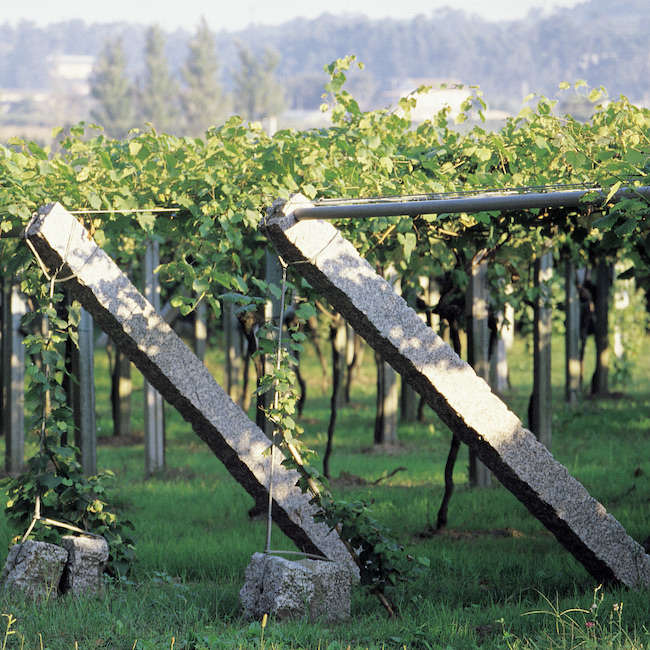
Castile and León
There was satisfaction over both yield and quality in Bierzo: the harvest was more generous than recent years while fruit quality was very good with alcohol levels typically more restrained than recent years, notable freshness in the wines and strong varietal character. Generous winter and spring rains coupled with mild temperatures led to an early bud-break in late March. The weather was particularly challenging in the third week of June when there was heavy rain which coincided with the peak of the flowering period. After a relatively cool, dry summer there was some rain at the end of August and in September causing some interruption to the earlier stages of the harvest.
For Cigales the rain in early September didn’t have a significant impact on acidity levels which bodes well for the region’s rosados and reds destined for ageing. Thanks to extensive work in the vineyards to keep vines well ventilated fruit quality was good at the point of harvest.
Thanks to the absence of any adverse weather events of note the harvest was generous for Toro and indeed it was the largest to date. More generous rainfall during the year contributed to higher yields and the key spring period was largely free of frost and unproblematic for flowering and fruit-set. The more sizeable crop is also partially due to higher permitted yields for existing grape varieties - Tinta de Toro being the main red variety - and the fact that the newly authorised white varieties Albillo Real and Moscatel de Grano Menudo were part of the DO harvest figures this year. There are high hopes for the 2021 wines after fruit quality was described as "extraordinary".
The September rains were timely for growers in Ribera del Duero helping grapes to reach the required maturity, particularly in the case of the reds, and boost the crop to a decent size. Yields of Albillo Mayor were low as this earlier ripening white was harvested ahead of the rain but with good intensity of flavour.
Almudena Alberca MW was very satisfied with the result at Viña Mayor (Valladolid), she said: “The wines have a lot of colour, intense aroma and riper fruit compared to other years - black fruit rather than red - with good structure and they are moderate to full bodied.” For Rueda the most challenging weather came at the end of May and early June in the form of heavy rain and some hail and occasionally strong wind with the net result of lowering yields. Modest summer temperatures meant that maturation was slow and gradual and harvest dates were later, notably for the main Verdejo variety. There was generally good acidity in the fruit, strong aromatic character and complexity all boding well for this vintage.
Bierzo: 12.7 million kg
Cigales: 7.8 million kg
Ribera del Duero: 109 million kg (Albillo Mayor:786,000)
Rueda: 124.5 million kg
Toro: 23.4 million kg
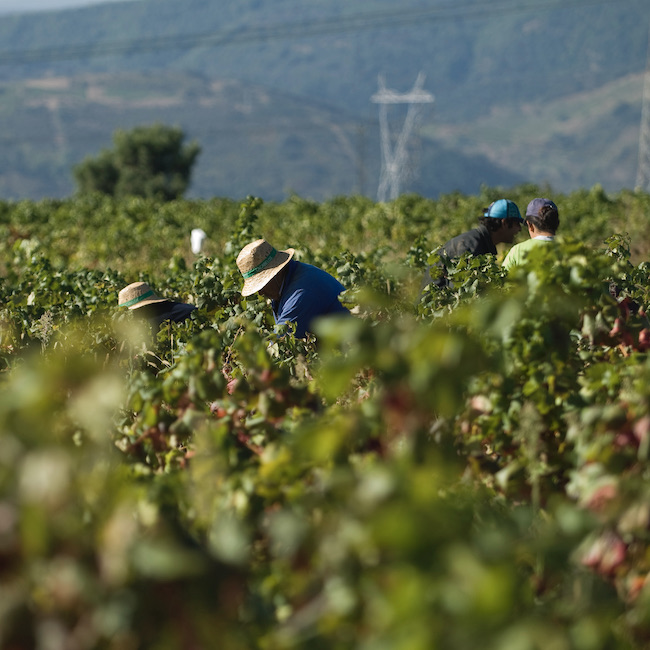
Rioja and Navarra
For Rioja Amaia Samaniego, at Gómez Cruzado (Rioja Alta), described 2021 as an “almost perfect” viticultural year, until September that is. “Winter was very dry with little rain which resulted in moderate vine growth. In the summer there was also little rain and we didn’t have extreme heat. The exception was some stormy weather in June when some of our vineyards were hit by hail”. (As occurred in some vineyards in the Alavesa).
Rain came with a vengeance in September, she said, and this was met with mixed feelings: in early ripening vineyards in the region the first signs of botrytis could be seen while in later ripening areas (where Gómez Cruzado has vineyards), the rain was welcomed for the maturation process. October was both dry and warm with wide day/night temperature variations bringing “enormous benefit” to the last stages of ripening and allowing a slow, staggered harvest. The team here believes that 2021 will be a great vintage, possibly the best of the decade, especially the wines coming from vineyards in the Sierra de Cantabria.
The harvest typically starts earlier in the warmer and more southerly sub-region of Rioja Oriental, but it wasn’t the case this year. At Bodegas Ontañón Conrado Herrero said that it was a difficult year in the vineyard. The dry summer caused significant vine stress, then 40 litres of water fell between 10-20th September. “We had to do a very selective harvest in the vineyards that had reached maturity,” he said. As in other areas of Rioja things looked up. “The vines which needed water absorbed it well and the fine weather and northerly breezes allowed for perfectly healthy fruit. It was a late harvest for us lasting until practically the end of October - we were still harvesting when the leaves had turned red.” He concluded: “The wines are structured, full-bodied, very aromatic and rich in colour. You had to have patience in this vintage and we’ve been rewarded.”
In Navarra the crop was down in volume on 2020. Garnacha struggled to ripen in some areas but where it did perform well fresh fruit, elegance and concentration could be seen in the young wines. The pattern was very similar to neighbouring Rioja with rain at the beginning of September but far more favourable weather during October for the final stages of ripening.
Rioja: 413.8 million kg
Navarra: 60 million kg
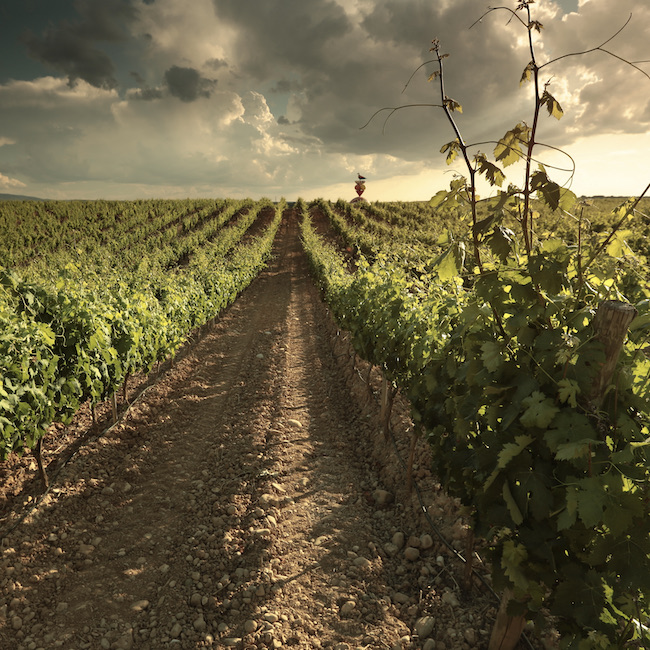
Aragón
In contrast to 2020, which was a particularly modest year in terms of yield, Somontano’s producers are upbeat about both quantity and quality. While other regions of Aragón saw harvest figures lower than last year, the crop was the most generous to date and there is talk of the wines being some of the best of the decade. Favourable spring conditions made a good start for Somontano’s wide range of white and red varieties which includes a high ratio of non-local grapes including Chardonnay, Gewürztraminer, Cabernet Sauvignon and Merlot. As elsewhere there was scarce rainfall over the key summer period, less extreme heat and fresh nights. Harvest started for early maturing varieties in mid August and continued steadily after early September rains which were particularly welcome for unirrigated vineyards.
While it was an average year in terms of total rainfall in Campo de Borja a particularly dry, fresh summer kept yields (mostly Garnacha) to modest levels and 21% less than 2020. Fruit quality was high thanks to low levels of disease. At Bodegas Borsao Guillermo Rodriguez said: “The clusters on the vines were small this year so it was very important to work hard in the vineyard to maintain quality. Rain at the beginning of harvest was timely for maturation and fruit was picked at the optimum ripeness. Yields were low but fruit quality was high so we’re optimistic about this vintage.”
Norrel Robertson MW witnessed the impact of Philomena in Calatayud where bitterly cold temperatures damaged some vineyards, despite winter dormancy, and bud-break was “irregular and staggered” as a result. The summer growing period was smoother with dry and mild weather favouring slow and gradual ripening. He describes the wines from this vintage as “crunchy and appealing… they remind me of some of the fresher harvests in Calatayud such as 2004, 2008, 2013 and 2018 in terms of quality.” For Cariñena the harvest was more generous than expected after challenging weather throughout the year: a very cold winter, low rainfall and, unlike most other regions, hot weather in July and August.
Campo de Borja: 29.1 million kg
Calatayud: 9.9 million kg
Cariñena: 72.8 million kg
Somontano: 21 million kg
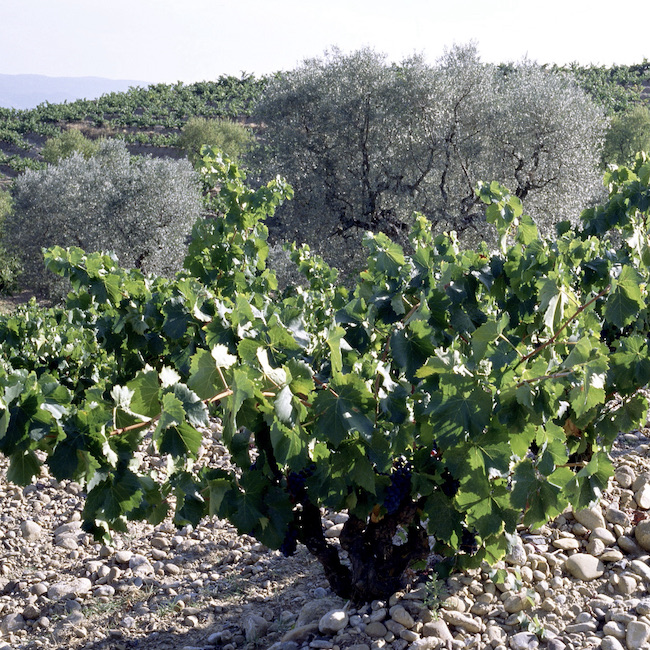
Catalonia and the South-east
In Penedès, where the focus is on white varieties such as Xarel.lo and Parellada, fruit quality was high but yields were modest due to low annual rainfall. The growing season and harvest was largely unproblematic for Catalunya. The crop was fairly typical in terms of volume and considerably more generous than the 2020 which saw the region badly affected by mildew. Red varieties such as Cariñena, Merlot and Tempranillo performed particularly well.
The summer was cooler than expected and, after rain in late August, the weather was milder than usual and overcast in September. The rate of maturation slowed for reds in particular until more favourable sunny days came in October together with cool nights which allowed for complete ripening with average alcohol slightly lower than in 2020.
Extreme and untypical weather made the growing season challenging for Priorat. High rainfall in May and June led to very positive vine growth and initially hopes were for a harvest of generous volume and fine quality but high humidity levels were the perfect environment for botrytis in some areas. The summer was far more typical with dry and warm weather accelerating maturation in the grapes. Harvesting started as early as mid-August in some areas with most areas finishing by mid-October.
With the exception of vineyards struck by disease in early summer, where production was sometimes almost entirely lost, yields were generous - indeed the total crop is the highest to date - and quality was high. The yield in Montsant was the most generous for five years. This is attributed to modest but regular summer rains and lower temperatures. However the rain at the beginning of harvest was more problematic especially in the middle and south of the region. At Celler de Capçanes careful selection was made and around 25% of growers’ grapes didn’t make the grade (but they were still paid for it).
In Majorca (DO Binissalem) the crop was more generous this year. Yields for Manto Negro, the main red grape, were particularly good indeed the trend on the island is towards more plantings of local grapes. The outcome of the harvest for Jumilla was very positive, especially for the main variety - Monastrell. Here the spring weather was cold and rainy. The early summer was cooler than usual but August featured higher temperatures and a week of intense heat which was challenging for some varieties but old vines coped well. Rain towards the end of harvest led to intense work in the vineyard but thanks to a northerly wind in late September and early October and favourable temperatures this variety ripened well with intense varietal flavour.
At Vicente Gandía in Valencia enologist Pepe Hidalgo described a vintage “like we used to have” with some challenging rain. Their harvest ran later than usual, only finishing in mid-October. The last stage of ripening, with wider temperature variation between day and night, allowed varieties including Tempranillo, Cabernet Sauvignon and Merlot to ripen well - particularly the skins. He expects wines with “round and polished” tannins as well as vibrant acidity and good aromas.
Catalunya: 45 million kg
Priorat: 7.3 million kg
Montsant: 8.7 million kg (50% more than 2020)
Binissalem: 1.2 million kg
Jumilla: 75.4 million kg
Valencia: in most areas yields were 15% lower than 2020.
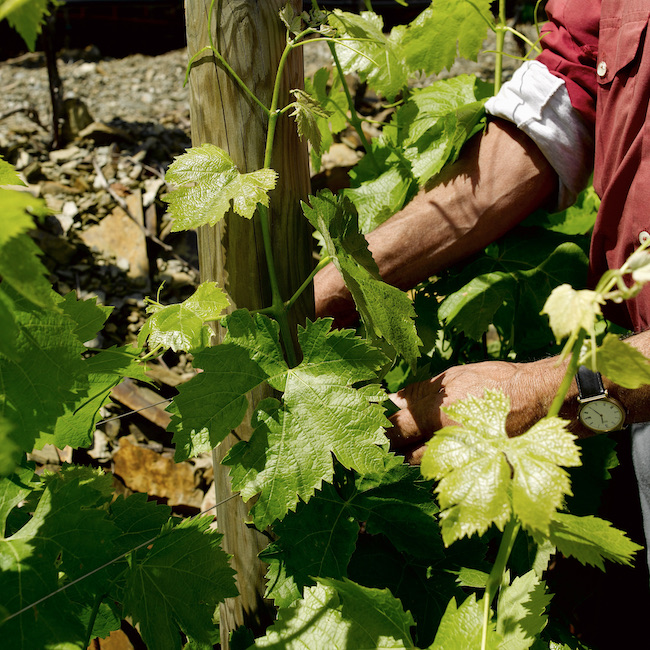
Cava
This year’s harvest for Cava was considerably more generous than the modest 2020. The total yield was 300 million kg with alcohol levels typically lower than last year and well balanced acidity offering good potential for winemaking according to the regional report. With the 2021 vintage producers can state the origin of their grapes according to three areas of production: Comtats de Barcelona (Catalonia), Valle de Ebro and Viñedos de Almendralejo (Extremadura) and seven sub-zones within them.Organically grown grapes continue to be a growing share of the vintage indeed the objective is for Cavas de Guarda Superior wines to be produced exclusively from organic grapes by 2025.
Sherry
The vintage was the earliest on record - the first fruit was picked in pagos further from the coast on August 2nd - and it was a short vintage due to low rainfall which has been the pattern for the last three years. By early September the harvest had drawn to a close with the exception of grapes destined for the sweetest styles. The most significant rain fell over the previous autumn and winter. Spring was very dry with frequent night-time frosts which favoured grape development. Summer temperatures were generally mild with the westerly Poniente wind dominating though there were some hot days in the run-up to harvest which affected some vineyards. Overall fruit quality was high with well balanced sugars and acids. Yields were slightly higher than last year with 57.5 million kg destined for the traditional criaderas and soleras ageing process in Jerez.
Text: Patricia Langton

